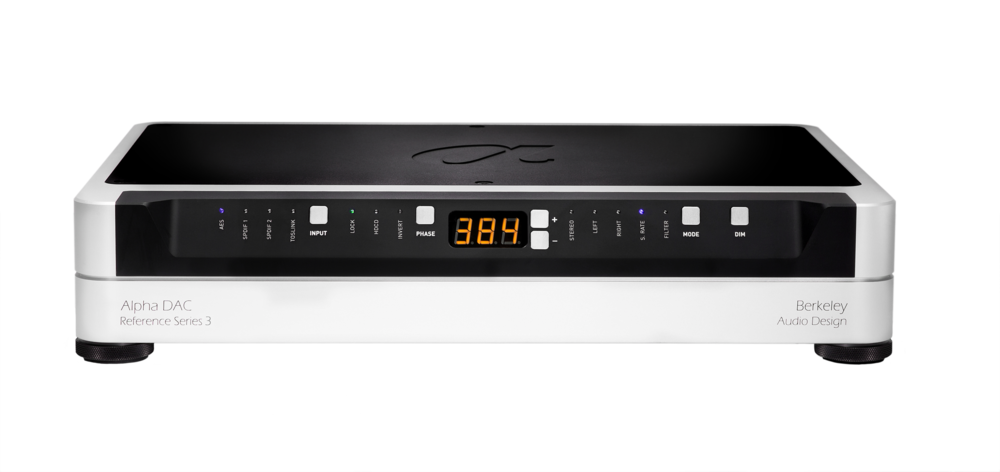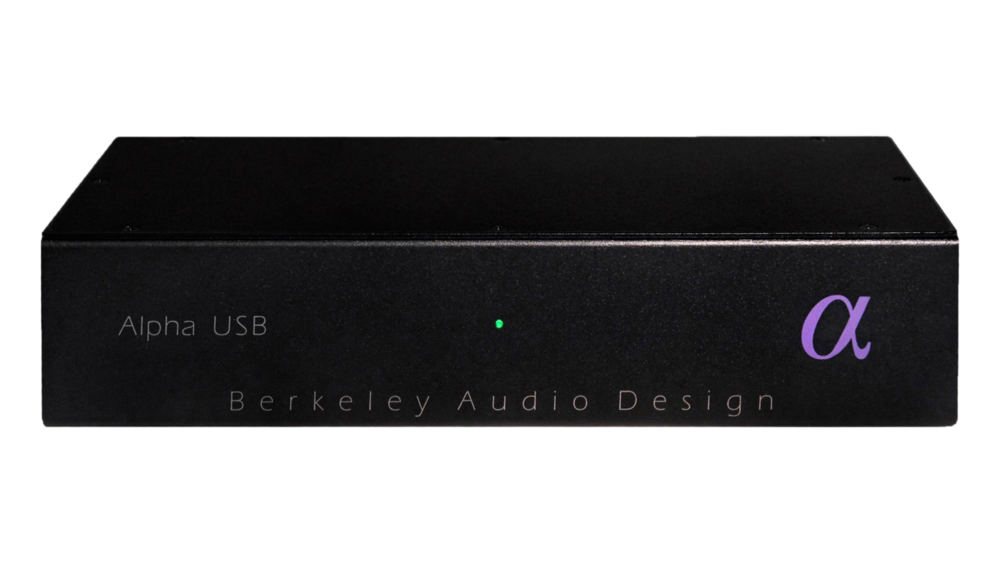This is a detailed measurement and review of the Berkeley Alpha DAC. The DAC retails for $4995 through dealers. It is an older design and this review is based on a prototype unit prior to manufacturing. There is now a version 2 with better clocking, etc.
NOTE: My company (Madrona Digital) is a dealer for Berkeley products. And I led the acquisition of their previous company, Pacific Microsonics (makers of HDCD format) into Microsoft. So I consider the founders professional colleagues. Feel free to read as much bias as you see fit in this review.
The Berkeley DAC as you see above has very good connectivity sans the important USB input. They believe the digital noise from that interface must be kept outside of a DAC and make a USB to serial digital box. Outside of that omission, the box comes with remote control and adjustable volume (controlled in software). Everything internally is asynchronously resampled, putting the DAC clock chip in charge (rather than tracking the input).
Let's see how the device performs.
For explanation of what these measurements mean and the setup, please see:
https://www.audiosciencereview.com/forum/index.php?threads/understanding-audio-measurements.2351/
Measurements
Frequency response is essentially rule flat:
View attachment 10633
There is a tiny rise however due to design of the digital filter. Note that due to heritage, the Berkeley Alpha DAC supports HDCD and with it, reduces the output level by 6 dB at 44.1 KHz sampling. It does not do this at higher sample rates. So if you are doing AB comparisons against another DAC, you better pay attention and level match. Otherwise the Berkeley will sound more anemic due to potentially lower output at 44.1 Khz.
Next let's look at noise and jitter and compare it to my other pricey DAC, the Exasound E32 (retail: $3,400):
View attachment 10634
The Berkeley produces a very clean noise floor whereas the Exasound has those low frequency wiggles plus a pair of tiny sidebands which indicate jitter. The Exasound noise floor seems better but that is due to its output also being lower. Compensating for that, they are both equal. So here the Berkeley wins.
Next let's look at harmonics and noise from a 1 Khz tone (with the tone filtered out):
View attachment 10635
The Berkeley has a single third harmonic and then remarkably clean until we get to higher frequencies where a few peaks show up. The Exasound E32 (in green) has much lower noise floor which then allows its harmonic distortions to be more visible. It also suffers from the same closely situated spikes as we saw in J-Test.
Note that it is possible the Berkeley level and Exasound were not matched so the difference in noise floor may be different.
Hard for me to judge which one wins here. Neither produce audible concerns as the distortion spikes are at extremely low level (-120 dB and lower).
Let's now look at my favorite, linearity test:
View attachment 10636
The Exasound E32 pulls ahead here with one more bit of resolution and error that seems to be noise dominated. The Berkeley on the other hand has a chewed up deviation that rises higher than Exasound. So the Exasound wins here.
Let's see the same response in time domain and see how well a very low amplitude -90 dB sine wave is recreated:
View attachment 10637
The higher noise floor seen in Berkeley output earlier shows up here making our sine wave look jagged. The Exasound on the other hand creates a beautiful facsimile of a sine wave. So it wins easily here.
Now let's look at intermodulation distortion:
View attachment 10640
Here both Exasound E32 and the much cheaper Topping DX7 pull ahead of Berkeley with lower distortion at all output levels.
Conclusions
The Berkeley is clearly a competently designed DAC. It is showing its age though in lacking USB input (which today is a mandatory input) and somewhat lower performance in objective measurements. So it is hard to recommend it to purchase now over the newer entrants.
P.S. Yes, you see references to Schiit Yggdrasil in the above graphs.

When I show the performance of that DAC, I will include comparisons to Berkeley Alpha DAC.
As always, all feedback, questions, corrections, etc. welcome.
If you like this review, please consider donating funds for these types of hardware purchase using Patreon (
https://www.patreon.com/audiosciencereview), or upgrading your membership here though Paypal (
https://audiosciencereview.com/foru...eview-and-measurements.2164/page-3#post-59054).


